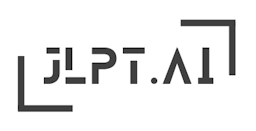

N2
音読み:tan
訓読み:katsu.gu
タンtan
かつ.ぐkatsu.gu
Carry, bear, responsibility
Imagine a person carrying a heavy load on their shoulder. This symbolizes the responsibility they have taken on. The vertical line represents the person's back, the horizontal line represents their shoulder and the curved line represents the load they are carrying.
The kanji '担' is frequently featured in JLPT N2 materials. Its usage and understanding are crucial for the kanji and reading comprehension sections of the exam.
彼女は新しいプロジェクトの責任を担っています。
She is taking responsibility for the new project.
かのじょはあたらしいプロジェクトのせきにんをになっています。
kanojo wa atarashii purojekuto no sekinin o ninatteimasu.
私たちは共同で重い荷物を担ぎました。
We carried the heavy luggage together.
わたしたちはきょうどうでおもいにもつをかつぎました。
watashitachi wa kyoudou de omoi nimotsu o katsugimashita.
彼は家族の生活費を一人で担っています。
He bears the living expenses for his family alone.
かれはかぞくのせいかつひをひとりでになっています。
kare wa kazoku no seikatsuhi o hitori de ninatteimasu.